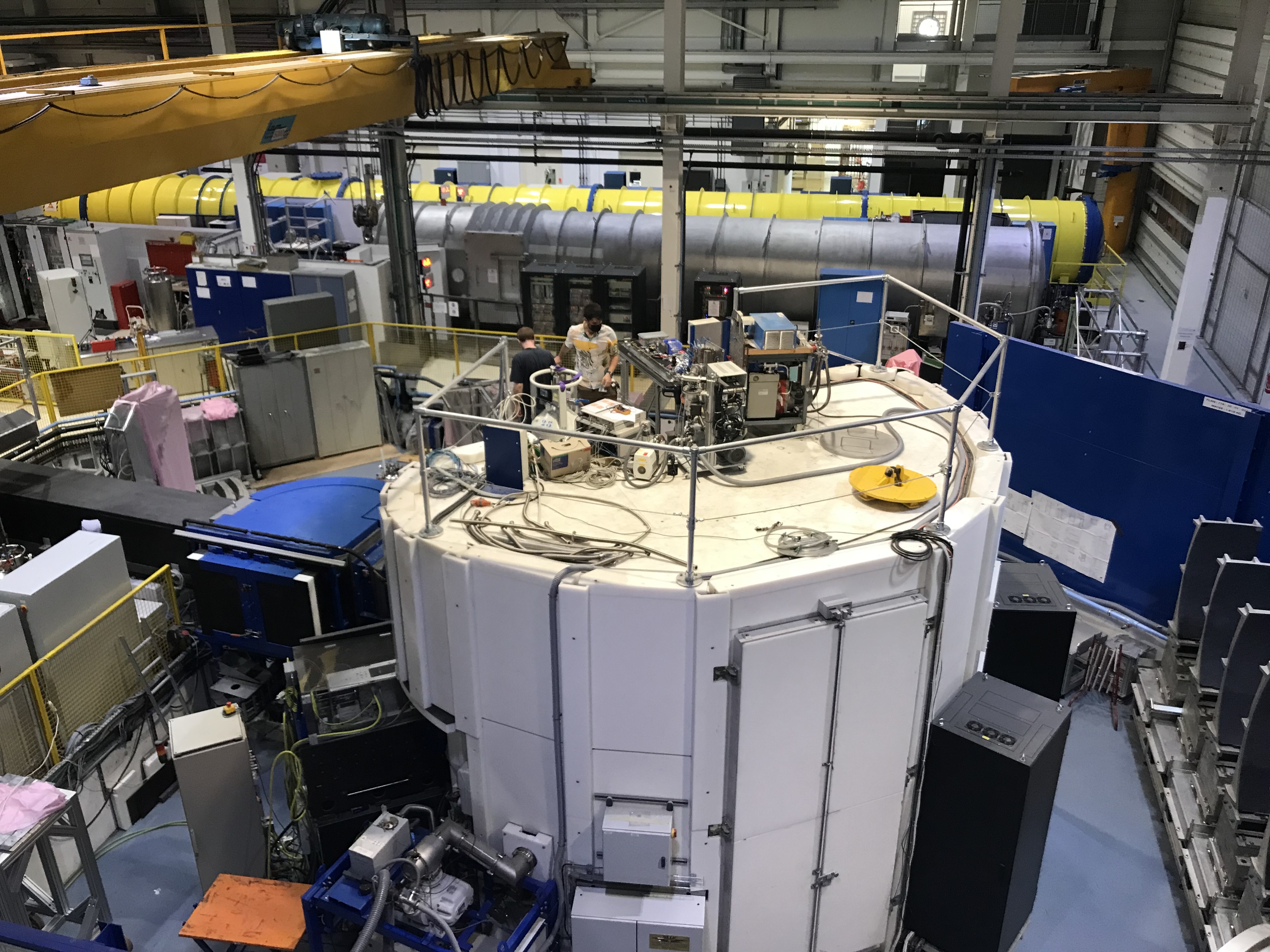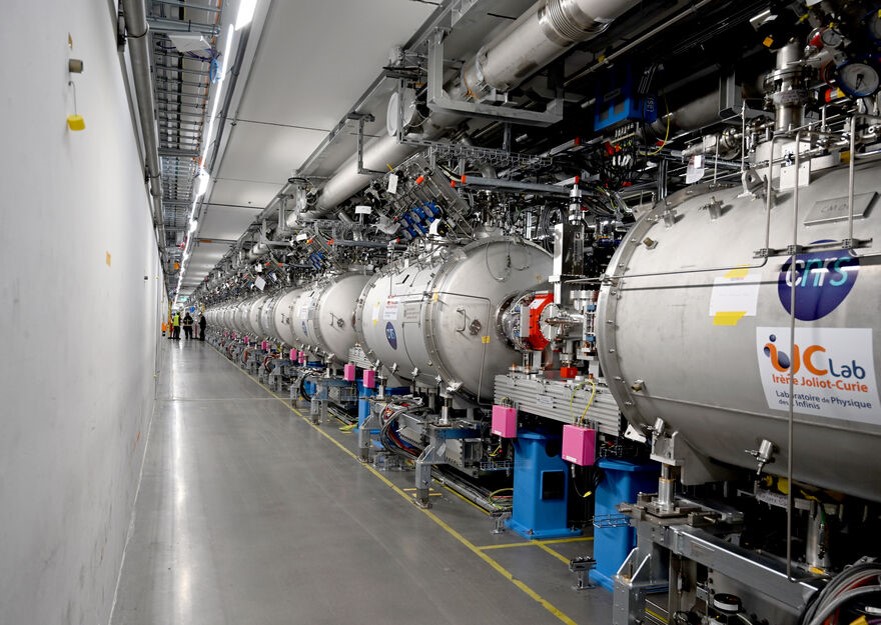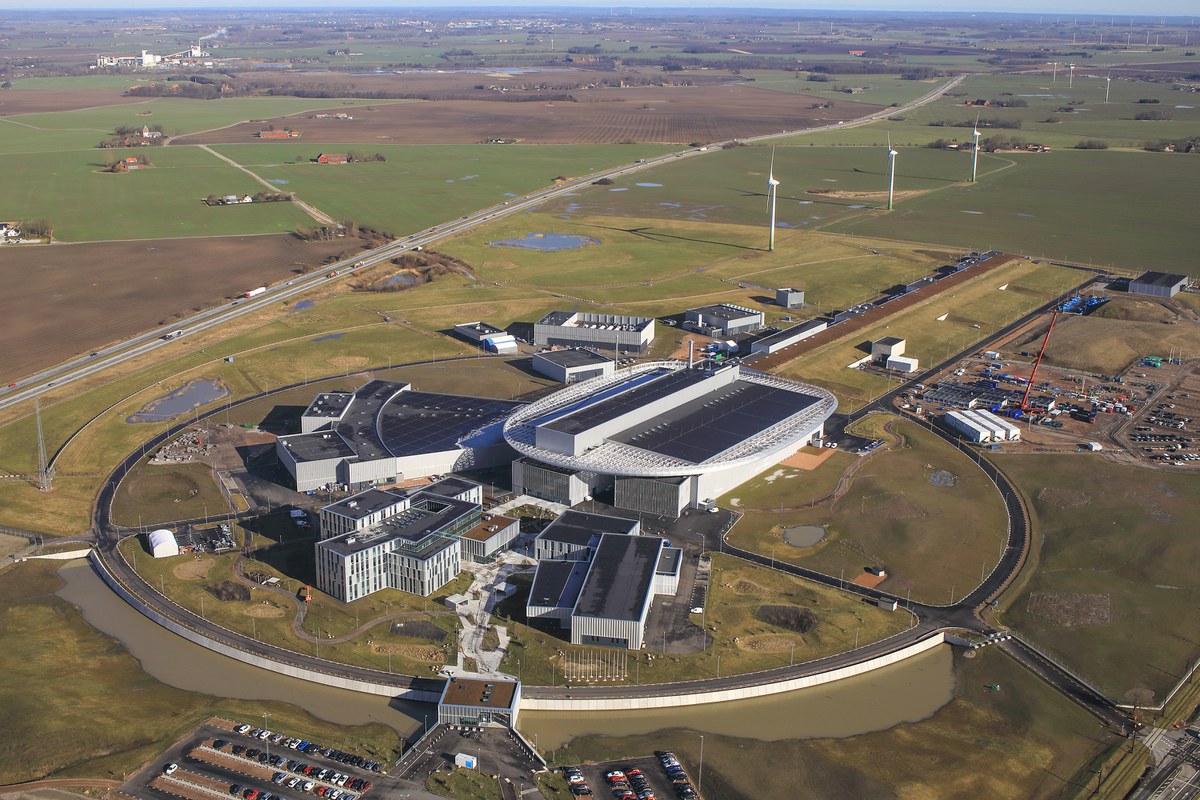French neutron scattering at the crossroads
Between delays in delivering the new European infrastructure under construction in Sweden and uncertainty surrounding the future of the Laue Langevin Institute, which is the last neutron source on French soil, the French neutron scattering community is pondering what strategy to adopt amid increasing international competition.
They are present in physics, chemistry, engineering, biology, and geoscience. Some industrial sectors use them as characterisation probes for materials used in energy (batteries or fuel cells), radiography, radiation resistance confirmation, and blended metal qualification. These mysterious objects are neutrons, particles with a neutral electric charge, which along with protons make up the nuclei of atoms. Since the end of the Second World War, the scientific discipline of neutron scattering has used their properties to characterise materials and substances. Thanks to its sensitivity to light elements and magnetism, this unique technique stands out from those using other beams, such as lasers and X-rays.
Europe at the cutting edge of neutron scattering…
In half a century, Europe has emerged as a cutting-edge actor in international neutron scattering research, and with good reason, for the continent boasts some of the world’s best installations for producing and using neutron beams. These installations are home to a series of cutting-edge instruments related to neutron sources, which cannot be produced in laboratory rooms, and therefore requiring very large infrastructures. Two technologies have prevailed for the time being. The first uses nuclear fission. Like a low-power nuclear power plant, a research reactor produces neutrons continuously, using enriched uranium-235 as fuel. These research reactors must nevertheless adhere to strict regulatory constraints, for they are based on the fission of nuclear fuel. Until the late 2010s, the European Union had a number of such reactors, counting four in Germany and France. For France, these include Orphée, located at the Plateau de Saclay and permanently shut down in 2019 after 40 years of service, and the High Flux Reactor (RHF) of the Laue-Langevin Institute (ILL), a symbol of French-German reconciliation opened in Grenoble in 1971, and the joint property of France, Germany, and the United Kingdom.

More recently, the spallation technique creates neutrons by shooting protons, or positively charged particles, at heavy atoms such as mercury or tungsten, which then emit a flow of neutrons. Unlike research reactors, spallation sources are pulsed and more intense. Spallation has momentum, with the United Kingdom enjoying a spallation source since 1984, named ISIS, and all eyes now turning toward Sweden. The giant European Spallation Source (ESS), a new multidisciplinary research infrastructure that will be equipped with the most powerful source ever built, has been under construction over the last decade in Lund, a few kilometres from the Baltic Sea. Michel Guidal, the President of the CNRS Very Large Research Infrastructure Committee, sees it as “the world’s highest performance, most innovative, and most brilliant machine1 , one hundred times more brilliant than the ILL”. Since 2001, this endeavour has brought together thirteen European countries2 , with the amount they each contribute to operating costs determining the time allotted to their national scientists. Among them, France–represented by the CNRS and the CEA–is playing a major role by contributing 9 % of construction costs, much of it in kind, which is to say by directly producing parts of the project. Working alongside the CEA, the CNRS has participated, via the Irène Joliot Curie Laboratory of the Physics of the Two Infinities3 , by producing approximately 15 % of the elements for the ESS Superconducting Linear Accelerator: thirteen complete cryomodules, equipped with a superconducting cavity made of niobium, whose shape is crucial to the ultimate performance of the instrument. France also contributed, via the Léon Brillouin Laboratory4 , in the construction of five of the first fifteen instruments for the ESS.

… but losing momentum by 2030
Despite its qualities, the ESS will offer little beam time to the European Community compared to what the ILL offers today. What is more, a project such as this one, spread out over so many years, is not without its hurdles. In addition to construction cost overruns–550 million in 2013 euros–the project is five years late. While the date for the first test beam is planned for July 2025, the opening of the ESS to academic and industrial researchers will not occur before late 2027 at best, and its ramping-up will be spread out over nearly ten years until 2037, in other words after the closing of the RHF, which is estimated to occur between 2030 and 20335 . However, as regretted by Sylvain Ravy, the Deputy Scientific Director (DAS) in charge of Infrastructure at CNRS Physics, “the time overrun for the ESS calls into question the optimal date for closing the ILL reactor”, as European scientists could no longer have sufficient access to neutrons on the continent. In fact, aside from the upcoming potential closure of the RHF, this is already the case for Orphée and one of the two German reactors, BER II in Berlin, while FRM2 in Garching, Bavaria has been out of service for a number of years. With regard to the British ISIS, the source is less powerful than the others. These limitations could compromise European excellence in neutron scattering, even as the United States is modernising its own neutron source–located in Oak Ridge, Tennessee and currently the world’s most powerful–and Asian countries continue to upgrade, China in particular. This loss of European momentum is perplexing for Ravy, who worries that “Europe, which is by far the leader in neutron scattering, could be surpassed by Asian countries by 2035”.
In this context, the idea for a national intermediate-power neutron source emerged, for both technical and strategic reasons. Aside from the French position of potentially extending the ILL until 2033–considered the world’s best neutron source, and constantly modernised6 since its creation–French actors in neutron scattering are studying a complementary solution to the ESS, the ICONE project. Based on a third-generation neutron source, the High-Current Accelerator-driven Neutron Source, this project uses a low-energy proton accelerator that produces neutrons by bombarding light atoms such as beryllium. This project is intended to be more modest than the ESS, with one hundred times less power, and consequently much less expensive. While the budget to build the ESS will total over three billion, and its operating budget will be around 240 million euros per year, ICONE would cost approximately 150 million euros to build over ten years, and 20 million to operate. “CNRS Physics supports the detailed draft project and awaits its conclusions”, Ravy points out.

ICONE could operate in parallel to the ESS and provide days of additional beams, allowing projects that do not require cutting-edge performance to proceed. “You do not necessarily need a race car such as the ESS for everyday research!” says Ravy, by way of illustration. For that matter, the potential shutdown of the ILL reactor and the transfer of scientific activity to Sweden would present certain strategic problems for the French neutron community. While France, the host country and one of the three countries associated in the ILL, enjoys one quarter of available beam time, it will only have 13 % of beam time with the ESS due to its lower share of funding. For Guidal this raises undeniable “sovereignty concerns”, for “if the ILL reactor closes and the ESS limits the time allowed to French scientists, there will be a loss of expertise and skills in neutron scattering in France”.
How to reconcile the limited use of the ESS that French scientists will have with the ever-increasing needs for neutrons? As international scientific competition increases, Guidal believes that French neutron scattering is “at a crossroads”. He believes only one thing is certain: “France must keep its cutting-edge expertise and skills in neutron scattering, a science that sheds light on issues that are both major and current”. With the ESS, the ILL, and ICONE, the path remains to be mapped out in the two years to come.
- 1In neutron scattering, brilliance refers to the number of neutrons produced per second in relation to beam size and divergence.
- 2Germany, Spain, Estonia, France, Hungary, Italy, Norway, Poland, the Czech Republic, the United Kingdom, and host countries Sweden and Denmark.
- 3CNRS / Université Paris-Saclay / Université Paris-Cité.
- 4CNRS / CEA.
- 5An amendment to the Convention (Sixth Protocol) between the three countries, signed by France, Germany, and the United Kingdom, stipulates that the reactor be decommissioned between 2030 and 2033. The final date will be decided by 2027.
- 6The most recent instance being the ENDURANCE programme, which will be completed next year.
